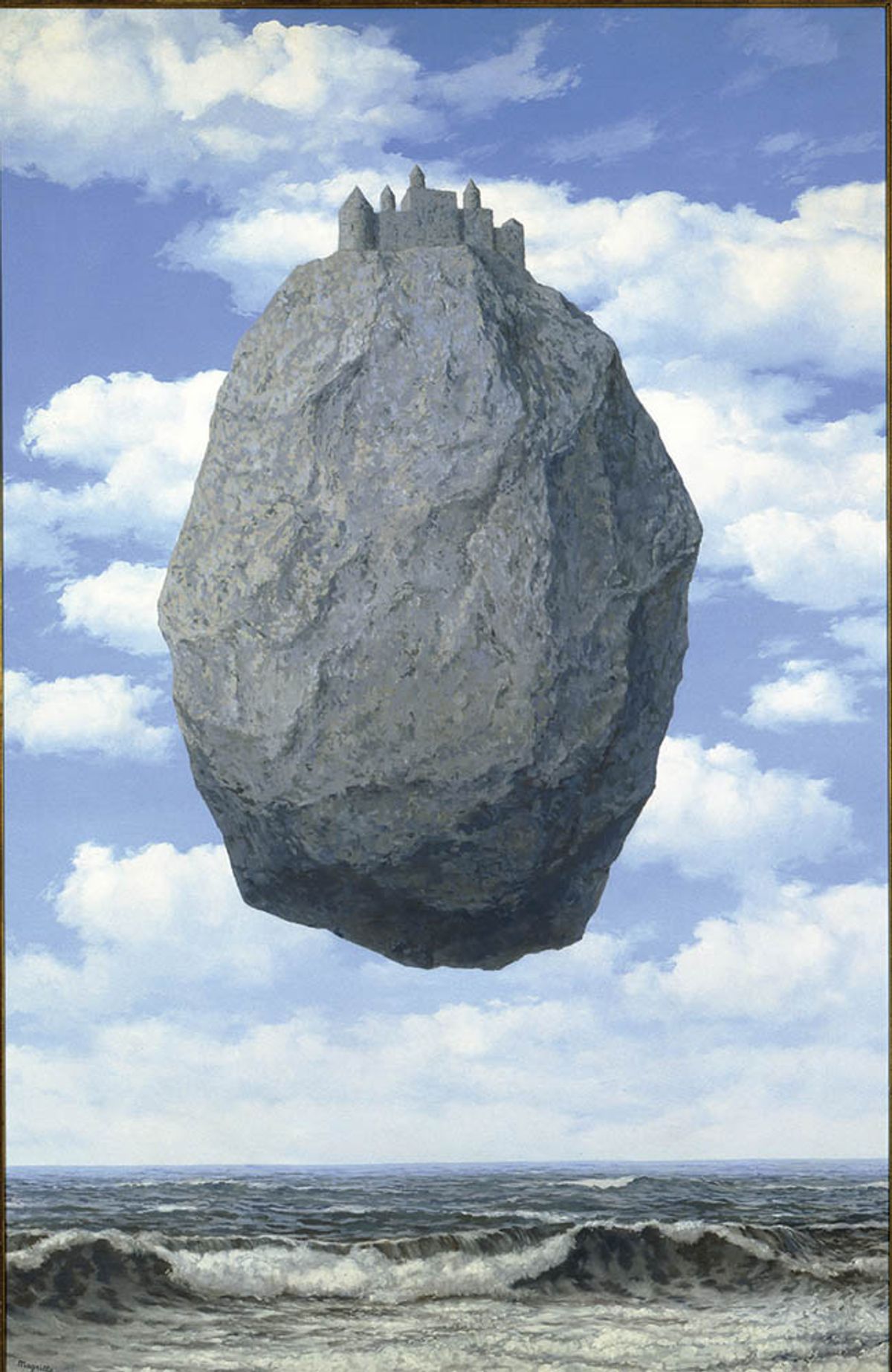Harry Torczyner was a lawyer with unconventional taste. His New York office had a window facing an ugly building, and he decided the best way to mask the offensive view would be to ask one of his clients to paint something to cover it. The client was René Magritte. The surreal painting that emerged from this odd request was The Castle of the Pyrenees (1959).
Torczyner had commissioned a portrait of himself from Magritte the previous year. This time around, he had fewer stipulations about the subject. In a letter published in the exhibition catalogue for Drifting with Magritte at Jerusalem's Israel Museum, Torczyner wrote: “May I express a secret wish that this painting represent a novel path which the Master would merrily venture on, knowing that he has to please no one but himself and that it is in his absolute discretion to be indiscreet.”
Using this liberal creative license, Magritte produced three preparatory sketches with different options and Torczyner picked one where an enormous boulder crowned with a castle floats above a choppy sea. He then exercised patron’s privilege and asked that the background be “the sky of a clear day, like the sky in your Empire of Light”.
Magritte’s Empire of Light series of 17 paintings (1948-67) bearing the same title—in which a pale daytime sky contrasts impossibly with a dark nocturnal scene—made headlines last month when a 1961 version broke the artist’s auction record at Sotheby’s London and sold for £59.4m with fees. Both this work and Castle of the Pyrenees encapsulate the Belgian Surrealist’s gift for conjuring improbable situations that nonetheless look eerily realistic.
Castle of the Pyrenees was removed from the window frame of Torczyner’s office in 1985, when the lawyer gave it to Israel Museum for its 20th anniversary. It has been prominently displayed there ever since, but this exhibition revisits the collection’s highlight and tells its story from inception to the contemporary artists it has inspired.
• Drifting with Magritte: Castles in the Air, Israel Museum, Jersusalem, until 18 October


